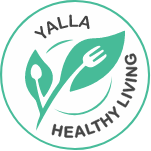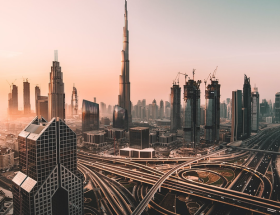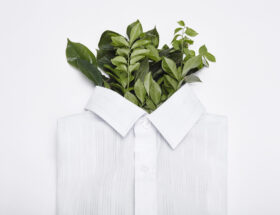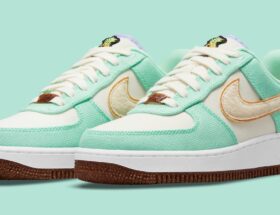Winner: Siemens’s Middle Eastern HQ is the first building to receive the US Green Building Council’s Platinum Leadership in Energy and Environmental Design award
From Masdar to The Line, why does the GCC keep building new cities?
Summary
- While a string of ambitious new cities projects has been announced across the Middle East, few have lived up to expectations so far.
- Among them, Masdar City in Abu Dhabi aims to house more than 40,000 people, a far cry from the current 6000 residents that are currently reported by official figures.
- “Many times, the benefits of ‘smart’ cities are lost in trying to do what is flashy,” says Abdulla Nuaman, an Abu Dhabi-based specialist in urban growth
On the drive to Masdar City, visitors are accompanied by arid desert on both sides. It is November, but Abu Dhabi is a scorching 32 degrees Celsius. The heat is dry and sweltering, with not a gust of wind for relief.
At the entrance of the city is a giant car park, the size of several football pitches. Anyone arriving by car can either be dropped off at an arrival point or park here and take an electric-powered personal rapid transit (PRT) capsule into the car-free main site.
From afar, the first thing that stands out is a glistening four-storey building. Its surface is covered in metal panels that protrude at an angle, giving the impression of fish scales. This is Siemens’s Middle Eastern HQ — the first building to ever receive the United States Green Building Council’s Platinum Leadership in Energy and Environmental Design award for its sustainable design. The ‘scales’ are folded aluminium plates, placed strategically to allow natural light in while keeping out the sun’s heat and glare.
As visitors walk through the city’s gates, they are greeted by a second surprise — a strong blast of cool air. Unlike the rest of the UAE, this welcome breeze is not air conditioning but wind, generated through traditional Arabic architecture such as barajeel (wind towers).
Strolling through Masdar, one cannot help but marvel at the city’s design. But something feels missing: there are no people on these windy streets today.
A legacy of sustainability
Launched in 2006, Masdar City was among the first ‘sustainable’ cities announced in the Gulf. Since then, numerous such projects have emerged across the region. Most recently, Saudi Arabia made headlines with its plan to build The Line — a 170km linear city in the desert powered entirely by renewable energy.
Masdar’s website pre-empts the question on the minds of many: “Why would a country that is blessed with vast reserves of oil care about renewables?”
“The story of sustainability is at the core of this region’s history. It was the vision of Sheikh Zayed [bin Sultan Al Nahyan], the UAE’s founding father, far before it became a mainstream ideal,” says Michelle Sabti, corporate relations team leader at Masdar — the holding company owned by Abu Dhabi’s sovereign wealth fund, Mubadala, and that owns Masdar City. It aims to promote sustainable urban development and clean energy to promote green power. “This region also has many competitive advantages, given the climate and sunlight.”
Over the past two decades, billions of dollars have been invested in sustainable city projects in the Gulf. The government of Abu Dhabi alone has invested $15bn so far in building Masdar City. Meanwhile, Dubai’s plan to build a smart satellite city — the Desert Rose — was reportedly budgeted at $8.1bn. In Saudi Arabia, authorities launched Neom (where The Line is supposed to be located) in 2017, putting its price tag at a staggering $500bn. In 2005, they had launched another multi-billion endeavour, the King Abdullah City.
Despite these eye-watering figures, only a few of these projects have effectively mobilised. Those that have — such as Masdar City — are struggling towards completion as they encounter challenges in attracting both revenue and residents.
Upon full completion, Masdar aims to house more than 40,000 people, a far cry from the current 6000 residents that are currently reported by official figures. “Our development strategy is primarily to focus on the office and research and development (R&D) elements of Masdar City, and to partner with third-party developers for the residential components,” a spokesperson for Masdar City tells fDi.
“Multiple plots have been sold to our third-party partners, which to date have been focused on residential, educational and light industrial, while Masdar City has developed the office core and R&D plots.”
What is going wrong?
“Since Masdar hasn’t been completed yet, it is clear that something didn’t go right,” comments Baharash Bagherian, CEO of Dubai-based sustainable city developer, URB.
Originally set to complete in 2016, the deadline has now been pushed back to 2030.
The current population consists primarily of contracted residents, such as Etihad airways cabin crew and students at the on-site university, Mohamed bin Zayed University of Artificial Intelligence, according to Zoë Harries, ex-director of the Masdar City Free Zone.
“If you look at financial viability at the early stages of a project, you need to make sure that it is viable without the help of public funding,” says Mr Bagherian. “You need to ensure that you can get funding from residential sales rather than bringing in numerous stakeholders. That in itself is a sustainable economic model. You need organic growth.”
Huda Shaka, a sustainable cities advisor based in Abu Dhabi, agrees: “The key to a successful city is making it feel like a place that people want to live in, not just blocks of concrete and steel. Cities have to be people- and human-centric.”
The PR angle
Although far from its residential goals, there is no doubt that projects such as Masdar City have been heralded on the global stage as forerunners in sustainable technology. At Cop27, Masdar was praised by a local newspaper, The National News, for its demonstration of “UAE’s climate leadership”.
While struggling to foster the establishment of a growing urban community, the perception of its sustainable leadership has caught the attention of the outside world.
“We are an unwitting tourist site,” comments Ms Sabti. In recent years, Masdar City has hosted dignitaries from across the globe wishing to demonstrate their commitment to renewables, including US president Joe Biden.
“Sustainable cities are popular in the Gulf because you want to create a place that attracts investment and attracts people,” says Abdulla Nuaman, an Abu Dhabi-based specialist in urban growth. “Smart cities boost environmental, social and governance metrics. The UAE government recognises this, and has taken significant steps towards tackling climate change.”
The Masdar City freezone, located within the city, prides itself on being a “thriving business community” that is fully tax free and allows for 100% foreign ownership. It hosts organisations including the International Renewable Energy Agency, as well as private firms such as Saint-Gobain, Honeywell and Siemens.
“Companies want to come to the freezone because they save on taxes and costs, are in a prime location and are able to align themselves with the mission of the city,” says Ms Harries. “What we do here is push sustainability boundaries and they want to be part of that.”
Despite this brand alignment, there are currently no sustainability standards or protocols that companies in the freezone must abide by, a local official confirms. Rather, Masdar’s claims to sustainability are based on its adoption of smart tech, such as the PRT, and its efforts in R&D via on-site universities.
“Many times, the benefits of ‘smart’ cities are lost in trying to do what is flashy,” comments Mr Nuaman. “But if a city can function like a small village, then it is successful.”
Masdar does have the population of a village. Though it hardly conveys to visitors that feeling of sustainability grandeur that is enshrined in its concept — and its PR material.










